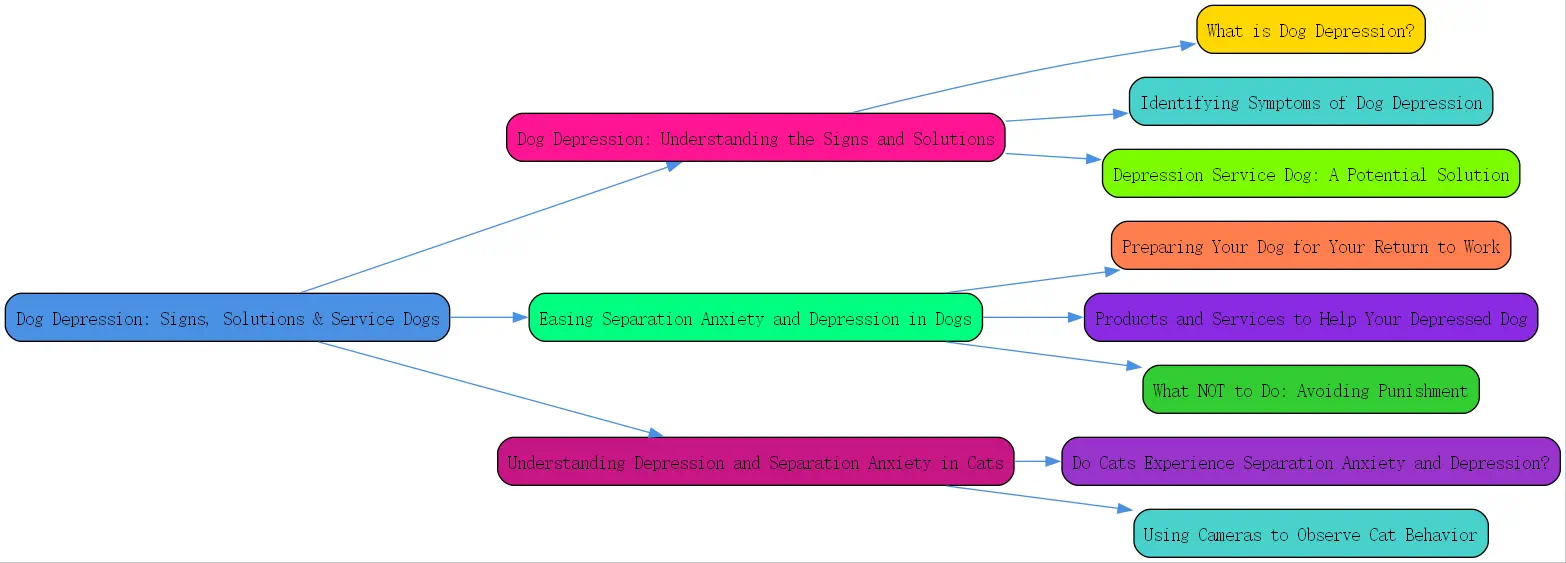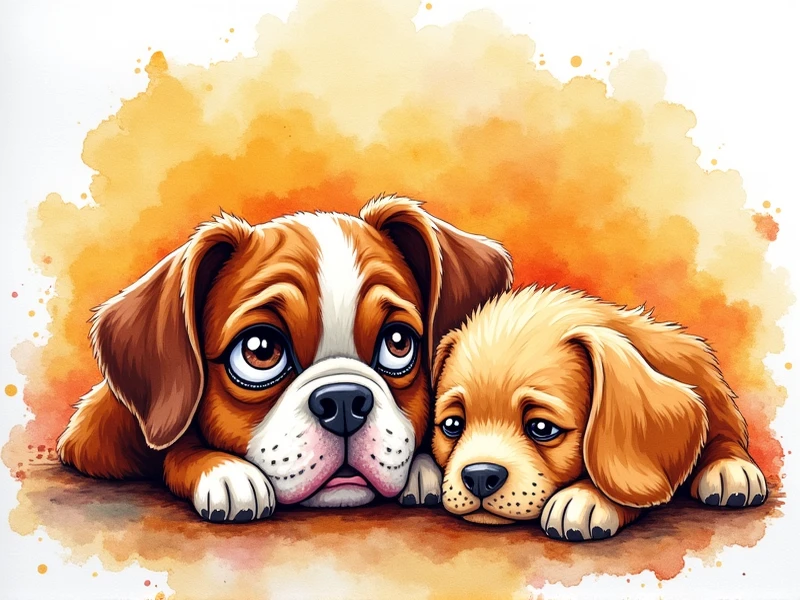Dog Depression: Understanding the Signs and Solutions

What is Dog Depression?
Dog depression is a real and often overlooked condition that can deeply affect our furry friends, especially when tied to separation anxiety. As more pet owners return to work in 2025 after spending extended time at home, dogs are facing new challenges adjusting to solitude. This emotional struggle can lead to behaviors that signal distress, making it vital for owners to understand what’s happening beneath the surface.
Separation anxiety is a clinical diagnosis where dogs find it hard to cope when left alone. According to animal behaviorist Dr. Krista Koppela, this distress stems from a dog’s inability to handle isolation, triggering an emotional response. For many dogs, this anxiety manifests as depression, a state that can sap their usual joy and energy. It’s not just about missing their owners—it’s about feeling abandoned in a world they don’t fully understand.
The emotional toll on dogs can be significant. They’re social creatures by nature, thriving on companionship. When that bond is disrupted—like when you head back to the office after months of working from home—it can leave them feeling lost. Recognizing this connection between dog depression and separation anxiety is the first step to helping your pet navigate this tough transition.
Identifying Symptoms of Dog Depression
Spotting dog depression starts with observing your pet’s behavior, especially when you’re not around. One of the most common signs tied to separation anxiety is excessive vocalization—think barking, howling, or whining. These sounds aren’t just noise; they’re your dog’s way of crying out for you, signaling their distress when left alone.
You might also notice changes in house training. A dog that’s usually spotless may start having accidents indoors. It’s not defiance—it’s a sign they’re struggling emotionally. Dr. Koppela notes that this regression often happens when dogs feel overwhelmed by solitude, a clear indicator of anxiety or depression creeping in.
Destructive behavior is another red flag. Dogs may scratch at doors or chew on window frames, desperately trying to escape and reunite with you. This isn’t just about damage to your home—it’s a physical expression of their inner turmoil. It shows how deeply dog depression can take hold when they’re left without their pack.
Less obvious symptoms include listlessness, hyperactivity, or even hyper salivation. A once-playful pup might seem withdrawn, uninterested in toys or walks, while others might pace restlessly or drool excessively from stress. These signs often go unnoticed since they happen out of sight. Setting up a camera can reveal what’s really going on when you’re away, giving you a window into your dog’s emotional world.
Depression Service Dog: A Potential Solution
Could a depression service dog be the answer for a pet battling depression? While these dogs are typically trained to support humans with mental health challenges, their presence can also benefit a struggling dog indirectly. Let’s explore how this works and why it’s worth considering.
A depression service dog is a highly trained companion designed to assist with tasks like providing comfort or interrupting anxiety spirals. Depression service dog tasks might include fetching medication or offering physical reassurance—skills that stabilize a human’s mental state. For a dog with separation anxiety, this can translate into a calmer household, which may ease their own distress.
The benefits for canine depression are subtle but powerful. A service dog for depression in the home can reduce the owner’s stress, creating a more peaceful environment. Plus, the added companionship might lessen a dog’s loneliness. Imagine your anxious pup finding comfort in a new furry friend—it’s not a cure, but it’s a step toward balance. Just ensure both dogs get along to keep the dynamic positive.

Easing Separation Anxiety and Depression in Dogs
Preparing Your Dog for Your Return to Work
Heading back to work in 2025 doesn’t have to mean heartbreak for your dog. The key is gradual adjustment. Start with short absences—pop out for coffee or a quick walk around the block. These mini separations help your dog build confidence, easing them into longer stretches alone without triggering full-blown anxiety.
Creating a “new normal” means setting a predictable routine. Dogs thrive on consistency, so try leaving and returning at the same times each day. This predictability can reduce the shock of your absence. Dr. Koppela emphasizes that understanding your dog’s emotional response is crucial—see their behavior as a plea for help, not a problem to fix with frustration.
Patience is your best tool here. If your dog’s been your shadow during remote work, sudden solitude can feel like abandonment. Take it slow, watch their reactions, and adjust as needed. A little empathy goes a long way in helping them feel secure again.
Products and Services to Help Your Depressed Dog
There are plenty of tools to support your dog’s mental health. A camera, like the Wise Camera from Petsmart, lets you peek in on your pup via an app. It’s a game-changer for spotting signs of dog depression—like pacing or whining—while you’re at work, so you can tweak your strategy.
Enrichment items can work wonders too. Boredom busters and puzzle toys keep your dog’s mind busy, distracting them from anxiety. These aren’t just toys—they’re mental workouts that tire them out in a good way, reducing the restlessness that feeds depression.
For a more social fix, consider doggie day camp. Offered by places like Petsmart, these programs provide playtime and interaction, boosting your dog’s mood through physical and mental stimulation. Another gem is brain games—activities that challenge your dog while strengthening your bond. Check out BrainTalking for more on how these exercises lift spirits.
What NOT to Do: Avoiding Punishment
Here’s a big no-no: don’t punish your dog for anxiety-driven behavior. Scolding them for accidents or chewed furniture might feel instinctive, but it backfires. Punishment ramps up their stress, deepening dog depression and eroding trust. It’s the last thing they need when they’re already struggling.
Positive reinforcement is the way to go. Reward calm moments with treats or praise, reinforcing the behavior you want to see. Dr. Koppela stresses keeping things fun and stress-free—think of it as building a safe space where your dog can heal emotionally.
Your dog isn’t acting out to spite you. They’re scared, sad, or confused. Approach them with kindness, and you’ll see progress faster than with any harsh words. A happy vibe at home is the foundation for recovery.
Understanding Depression and Separation Anxiety in Cats
Do Cats Experience Separation Anxiety and Depression?
Yes, cats can suffer from separation anxiety and depression too, though it’s less obvious than in dogs. We often assume cats are aloof, but some genuinely miss us when we’re gone. Unlike dogs, they won’t tear up the house, but their distress shows in quieter ways that are easy to miss.
Excessive meowing is one clue. If your cat’s suddenly chatty when you’re out, it might be their way of calling for you. Dr. Koppela points out that vocalization is a key sign, though it’s subtler than a dog’s howling.
More often, cats show passive signs like inappetence, depression, or listlessness. A cat that skips meals, hides all day, or stares blankly might be battling anxiety. These behaviors signal emotional strain, and they’re worth watching for if your feline friend seems off.

Using Cameras to Observe Cat Behavior
Wondering how to catch these sneaky signs? A camera is your best bet. Set one up to watch your cat while you’re away—it’s the only way to see what’s really happening. Subtle shifts, like excessive grooming or pacing, can tip you off to anxiety or depression.

Monitoring helps you understand your cat’s unique stress signals. Maybe they’re fine until hour two, or perhaps they nap through it all. Either way, you’ll have the data to act. Pair this with advice from BrainTalking for a solid plan to help your kitty cope.
In wrapping up, tackling dog depression and separation anxiety—or even spotting it in cats—takes awareness and action. From gradual absences to smart tools and a no-punishment mindset, you can guide your pet back to happiness. For deeper insights, explore BrainTalking, where psychology meets pet care.
- Watch for barking, accidents, or destruction as signs of dog depression.
- Ease your dog into alone time with short, consistent absences.
- Use cameras, toys, or day camps to boost your pet’s mood.
- Skip punishment—opt for positivity to reduce stress.
- Check cats for meowing or withdrawal with a camera.
Q: How can I tell if my dog is depressed or just bored?




